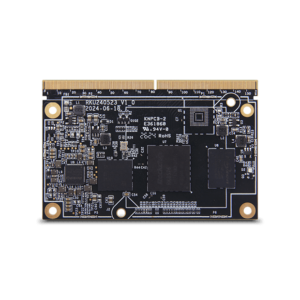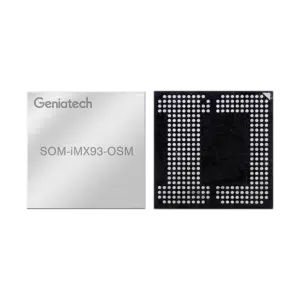System on Modules: The All-in-One Solution for Embedded Systems
System on Modules: The All-in-One Solution for Embedded Systems
Blog Article
Stuck systems have been at the front of technological advancement, running from medical units and professional machinery to gadgets and IoT solutions. However, a game-changing engineering is getting their possible to a completely new level—enter Pc on Adventures (CoMs). These compact, high-performance research panels are emerging as a crucial option, streamlining embedded process design and revolutionizing how industries approach equipment and system module.

What Are Pc on Modules?
A Computer on Module is actually a tiny pc stuck right into a single, small board. It includes all the conventional the different parts of a traditional computer, including a processor, storage, energy management, and input/output connectivity. Nevertheless, alternatively of being a standalone system, it's designed to seamlessly combine into larger methods via custom company boards. That modular style allows designers to generate personalized stuck techniques while leveraging a pre-validated processing key, keeping both time and resources.
Why CoMs Are Transforming Stuck Techniques
1. Rushing Up Time-to-Market
One important advantageous asset of CoMs is their power to accelerate solution development timelines. Their pre-built and pre-tested patterns allow businesses to focus on customizing the copyright panel to generally meet specific request wants, rather than planning the foundational research component from scratch. That rapid growth design has empowered industries to bring products and services to advertise faster, giving companies a vital aggressive edge.
2. Simplifying Improvements
Historically, upgrading stuck methods expected a complete change of hardware parts, that could be expensive and labor-intensive. CoMs undertake this problem by providing modularity. Developers may replace just the element while preserving the company board, making it somewhat simpler and more cost-effective to undertake new systems and enhance program performance.
3. Improving Scalability and Flexibility
With different CoM options available, from low-power ARM-based segments to high-performance x86 alternatives, scalability is a essential feature. Developers can easily change a CoM to match a broad spectrum of use cases, from lightweight IoT products to powerful device perspective platforms.
4. Streamlining the Prototyping Process
Designing prototypes may be resource-heavy, specifically for embedded techniques that require a top amount of detail and reliability. CoMs simplify this method by providing designers a trusted, high-quality bottom that diminishes the risk of problems during the original stages of development.
Operating Creativity Across Industries
Pc on Segments are breathing new living into a variety of industries. Healthcare devices are becoming scaled-down and efficient, commercial automation is encountering unparalleled detail, and IoT applications are becoming smarter and more scalable. CoMs are not only revolutionizing embedded systems—they are paving just how for a future described by modularity, flexibility, and quick innovation.
As CoMs carry on increasing traction, something is clear—they're rewriting the guidelines of embedded programs style and surrounding the following wave of technical breakthroughs. From small startups to global corporations, companies across industries are adopting that effective engineering and operating advancement forward. The future of stuck techniques has never appeared brighter. #
Increasing the Affect of CoMs in Various Purposes

CoMs are not only restricted to traditional stuck system purposes; their potential is huge and diverse. As more industries identify the advantages of CoMs, they're being incorporated right into a wide variety of purposes, from intelligent domiciles and wearable products to autonomous vehicles and sophisticated robotics. These small processing segments have opened new opportunities for innovation, permitting designers to force the limits of that which was formerly thought possible.
Report this page